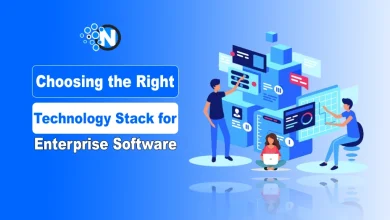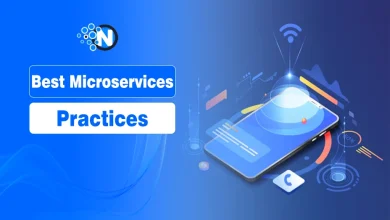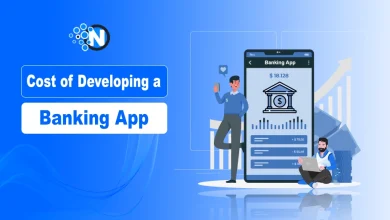Unlocking the Future of Healthcare with EHR and EMR Software Development Services

In today’s digital-first world, the healthcare industry is undergoing a massive transformation, thanks to technology. EHR (Electronic Health Record) and EMR (Electronic Medical Record) systems are among the most impactful innovations. But what exactly are these systems, and why should healthcare providers care about EHR and EMR software development services?
In this blog post, I will shed light on the future of healthcare with HER and EMR software development and their impact on overall healthcare delivery.
Let’s start!
EHR and EMR Systems Explained
An EHR is a digital version of a patient’s paper chart. It is accessible in real time and designed to be shared across multiple healthcare organizations. EHR systems include a wealth of patient information, ranging from medical history, allergies, medicines, immunizations, test results, to treatment plans. They help manage chronic care and since they are interoperable, all medical professionals can exchange information smoothly.
Unlike the EHR, an EMR is a smaller digital record of patient information that is stored at just one location. The primary purpose of EMRs is to assist with diagnosis and treatment, keeping a patient’s medical and treatment records in a digital format within one doctor’s office. Despite being associated with one another, the terms have different meanings.
EMRs can be used by a single provider as a virtual filing system for their records. Users can view more information and easily share it with others. EMRs can be used in one clinic, but EHRs make it possible to provide unified care to patients nationwide.

Why EHR and EMR Software Development Services Matter
Healthcare matters to each individual, yet organizing it should be easy. By working with custom EHR and EMR software development services, doctors can deliver consistent and efficient care. Accurate records support good diagnosis, reduce mistakes, and provide a better patient experience. Imagine having access to a patient’s medical history and receiving instant updates on tests, all on one safe system.
Healthcare professionals deal with a mountain of paperwork every day. Using custom-built EHR and EMR gets rid of messy processes by handling routine activities, including entering data, sending reminders and billing. Because of this, doctors can spend more time helping their patients and less time writing records. Healthcare administrators can use chatbots to achieve more goals and reduce tiredness.
Core Features of Modern EHR and EMR Software
- Patient Data Management
One of the cornerstones of EHR and EMR platforms is their ability to collect, store, and manage patient data. From demographic details to diagnostic reports, everything is organized and easily retrievable. Moreover, data is encrypted and stored with security compliance to meet HIPAA and other regulatory standards. Modern EHR and EMR software not only streamlines data entry but also redefines how valuable clinical insights are extracted from patient records. Healthcare organizations can transform large volumes of clinical information into actionable intelligence for quality improvements by combining it with systems that improve patient care through data abstraction. Strategic data abstraction enhances decision-making, supports regulatory reporting, and ultimately elevates care standards within facilities. - Appointment Scheduling and Billing
A smart scheduling system integrated into the EHR or EMR helps reduce no-shows and improve clinic flow. These platforms also support automated billing, coding, and insurance claim submissions, making life easier for the admin staff and ensuring faster payments. Beyond EHR/EMR functionality, many practices pair these systems with dedicated practice management platforms to optimize front- and back-office workflows. Evaluating modern clinic management tools can streamline patient intake, electronic claim submission, denial management, and accurate payment posting, reducing administrative burden while improving cash flow. - Integration with Lab Systems and Imaging
Today’s healthcare requires seamless coordination. Modern EHR and EMR systems can integrate with labs, imaging centers, and pharmacies. This means providers get instant access to lab results or imaging scans, all in one dashboard—no more waiting for paper results or chasing labs for updates.
The Process of EHR and EMR Software Development
The journey begins with understanding the healthcare provider’s needs. Developers conduct detailed consultations, stakeholder interviews, and workflow analysis to map out the exact requirements. Once the blueprint is ready, UI/UX designers create intuitive interfaces tailored for doctors, nurses, and admin staff.
Developers then build the backend systems, APIs, and integrations needed for full functionality. After development, the software undergoes rigorous testing functionality, security, and performance. Upon approval, it’s deployed across systems, with training provided to the staff. Ongoing support ensures updates, maintenance, and smooth operation.
Future Trends in EHR and EMR Software Development
AI and Predictive Analytics Integration
Suppose there’s a system that does more than hold data—it helps doctors decide better. Adding AI is considered one of the top trends currently affecting EHR and EMR software. With the help of AI, such systems can review previous medical data, highlight any concerns and develop customised treatment plans. It can help recognize early indicators of diseases like diabetes or heart problems by using information from lab tests, vital signs and a patient’s actions. Having access to real-time predictions, doctors are equipped to provide care before issues arise, and this helps save money and achieve better results.
Telemedicine and Remote Monitoring Support
As a result of the COVID-19 crisis, more people switched to telehealth, and this trend is likely to continue. Telemedicine support is included in developing today’s modern EHR and EMR systems. Video consultations, monitoring patients remotely, and linking to devices that monitor heart rate and oxygen levels, among other data, are some examples.
Such features allow more people to use telemedicine and make it easy for clinicians to monitor patients with long-lasting medical conditions from home. Being able to meet online with your doctor and share information immediately provides better and more efficient care for patients.
Blockchain for Healthcare Data Security
Blockchain isn’t just for cryptocurrencies. It provides the strongest level of safety and accuracy when managing health information. Thanks to storing data across numerous machines and making the records permanent, blockchain ensures patient data is secure, open, and easy to access for authorized persons.
Blockchain used in EHR and EMR systems improves patients’ trust in their providers. It also allows for easier data sharing between institutions through smart contracts that determine who has access to the data according to set conditions.
Conclusion
The digital transformation in healthcare is taking place right now. With the development of EHR and EMR software, healthcare providers are finding new ways to function, connect with each other, and take care of their patients. EHR and EMR software do more than just substitute for paper documents. They are meant to make things easier for healthcare staff, give patients a better experience, and help with data-based choices.
When medical institutions invest in custom software, they can keep their operations up-to-date, ensure compliance, and improve outcomes. Whether your medical facility is small or large, the right EHR and EMR system can make it easier to use new technologies for medical care.
It’s very important to pick the correct development partner. Identify a company that has experience, flexibility and is extremely committed to security and support. With the right tools in place, the future of healthcare is smarter, faster, and more human-centred than ever before.




